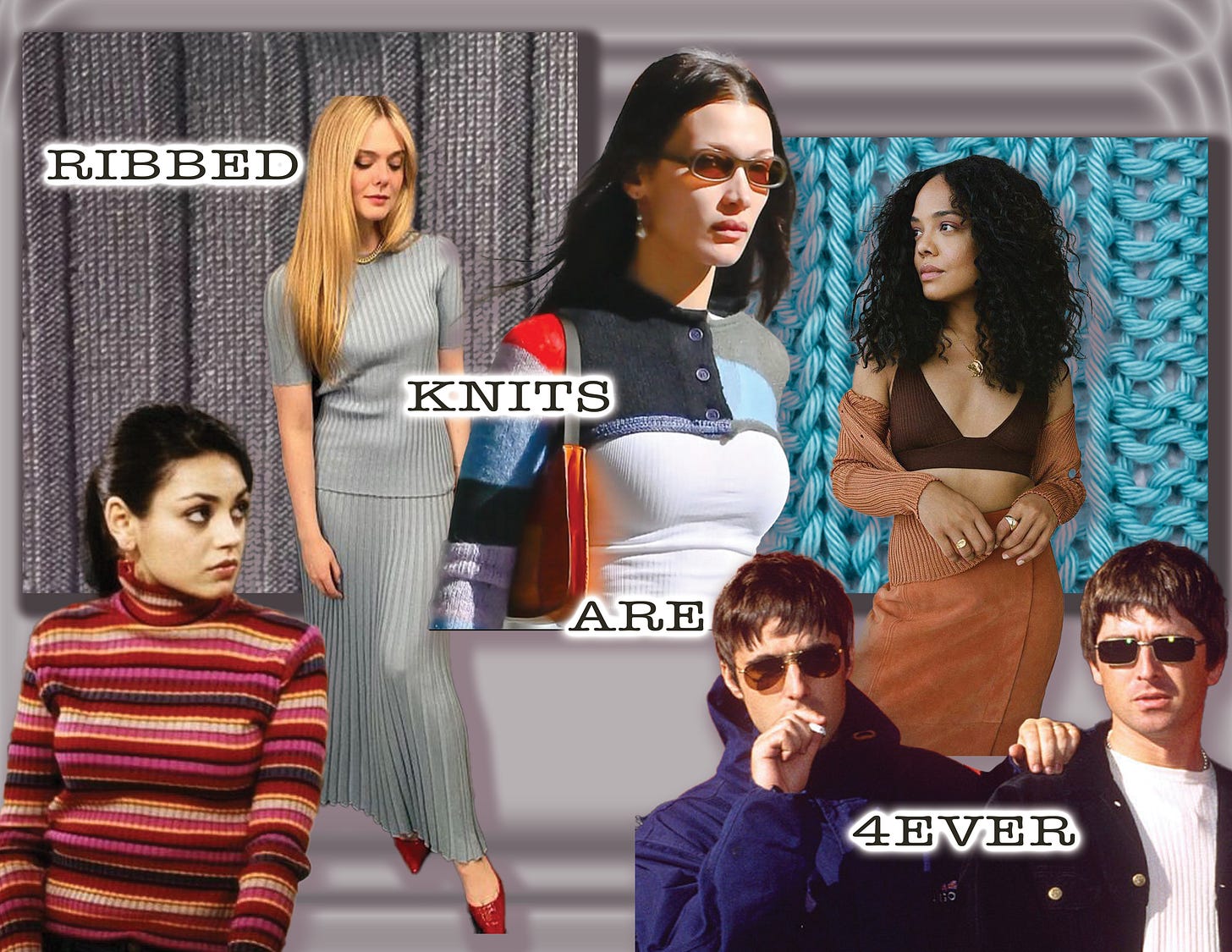
Is it a woman’s prerogative to love ribs since we were born from one (lol)?
I am in this case of course referring to the ribbed textures/stitches found in the garment universe. Like unto Eve being born of Adam’s rib, I, too, am also experiencing a womanly focus on ribs lately. I recently underwent a minor surgery along my ribcage, rendering the need to go braless and wear soft, comfy (often ribbed) knits along said ribs—creating an amalgamation of rib-centeredness—both of the body and of design. (OK so I’m going wide with it, but that’s my way). It’s a funny experience when circumstance requires a shift in your presentation of self, especially in regards to getting dressed. I have come to appreciate the comfort of knits even more during my recovery; with ribbed knits in particular—given their body-skimming abilities—offering an easy way to feel sexy, without “trying”. There’s that womanly temptress energy—thanks, Mama Eve: you would’ve loved ribbed knits!
Ribbed knits of all sorts.
This week can be considered part chapter of the textile dossier, since we’re focusing on knit structures, and part silhouette-centered since fitted is often the intention with a ribbed knit. Ribbed knits come in both cut-and-sew fabric and fully fashioned knit varieties. Remember the difference between these two is essentially: if you can’t buy it on a bolt of fabric at the store, it’s fully fashioned (knitted into existence). Cut-and-sew knit fabric has similar qualities to fully fashioned sweaters, but C&S can be *literally* cut and sewn together to form a garment (unlike F.F. knits). Fully fashioned sweaters are always going to be more expensive because they are more labor-intensive, expertise-involved, expensive and timely to create.
No matter the knit type, knits are more comfortable than wovens (sorry wovens: I still love you)! This is because knits have natural stretch due to their looped structure (there’s a reason you reach for that sweatshirt or T-shirt when you’re lounging, instead of that button-down). And when it comes to the world of knits, there is no one better to go to for inspiration and knowledge than Sue Benfield, knitwear developer extraordinaire. And that is exactly what I did.
From Sue:
Basically, knitting is the process of making loops. You make a row of loops, then you pull yarn through those loops to make new loops.
You have the choice to pull the new loop through from the back to the front or from the front to the back.
A 2x2 rib is: two (yarns) from the front/two (yarns) from the back/two (yarns) from the front/two (yarns) from the back.
Changing the directions of the loop-pulling creates some tension that you don’t ordinarily get in a textile whose loops are all pulled in the same direction.
This tension in turn creates recovery, which makes a rib very efficient at the bottom of a sleeve or body of a sweater, springing inwards to hug the wrists and hips.
But, as is the case with every simple action learned by the knitter, it enables you to create a seemingly infinite variety of materials. Here are some examples from my Archive.
Thanks for sharing, Sue!
It’s easy to see the magic ribbed knit stitches can create—and above are just a few highlights of its artistic capabilities.
I think a basic 2x2 (or 1x1, or 2x1) rib structure in its simplicity, with its signature neat, vertical lines visual, is just sublime. Sometimes I just need a palette cleanser and gravitate toward wearing something minimal and fitted, and a ribbed knit serves both purposes with ease. That’s why my ribbed knit collection (among many other garment favorites, it seems) is always growing. And speaking of growing, you’ll want to look for some amount of spandex/elastane or nylon in the fiber content for that “give” recovery in a ribbed knit.
There are exceptions to this fiber content depending on the vibe; for instance, with a high quality 100% cotton, there will be some looser-fitting areas while you’re wearing/moving/creasing the garment; and it’s just part of the look, but also it’s easy to shrink the stretched out areas right back up in the wash. And for a lil’ seasonal fiber content addition: any fiber can be knitted into a rib stitch. But for spring/summer: look for cotton, linen (flax), ramie, and hemp; but also lightweight are: viscose, bamboo and modal. Modal is the most expensive of the aforementioned spring/summer weight fibers as it is made from spinning beech tree cellulose (and uses 10-20 times less water than your average cotton production)! My black cropped tank (below) is a modal blend and the drape and hand feel are *~heavenly~*.

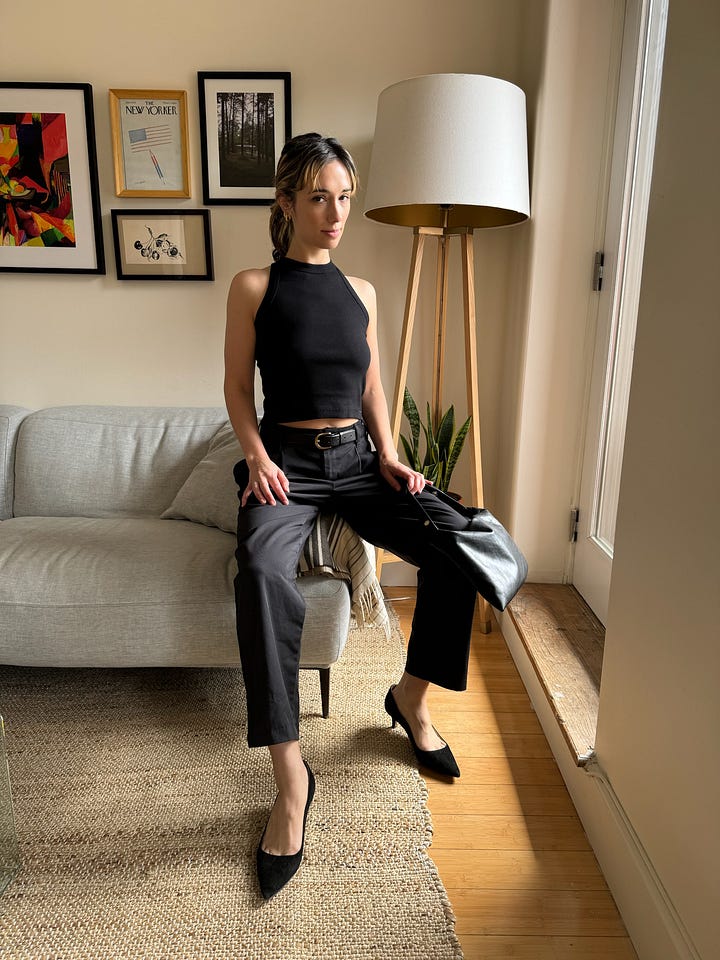
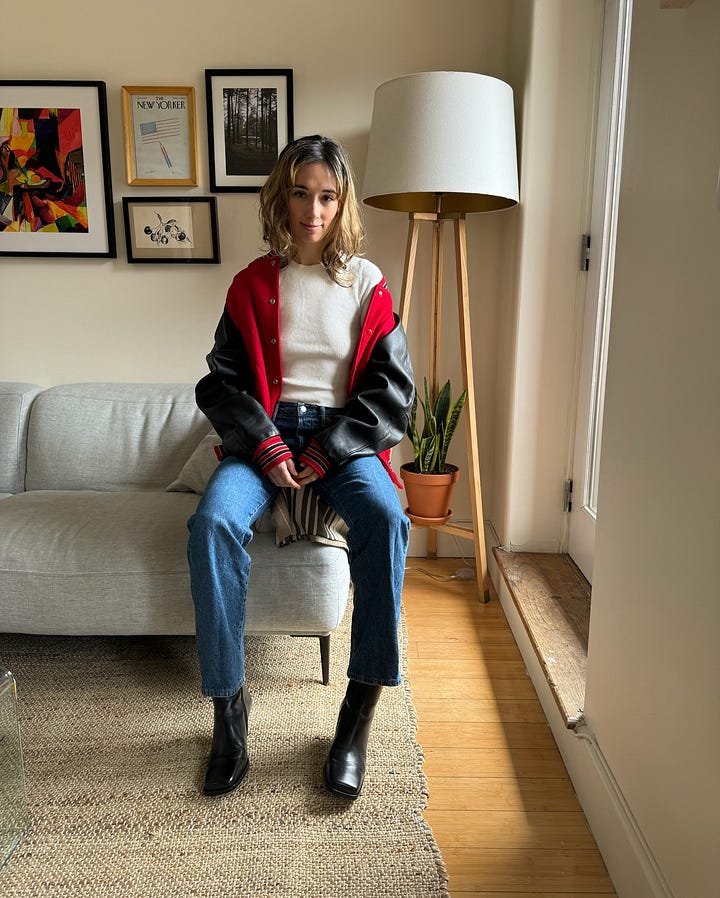
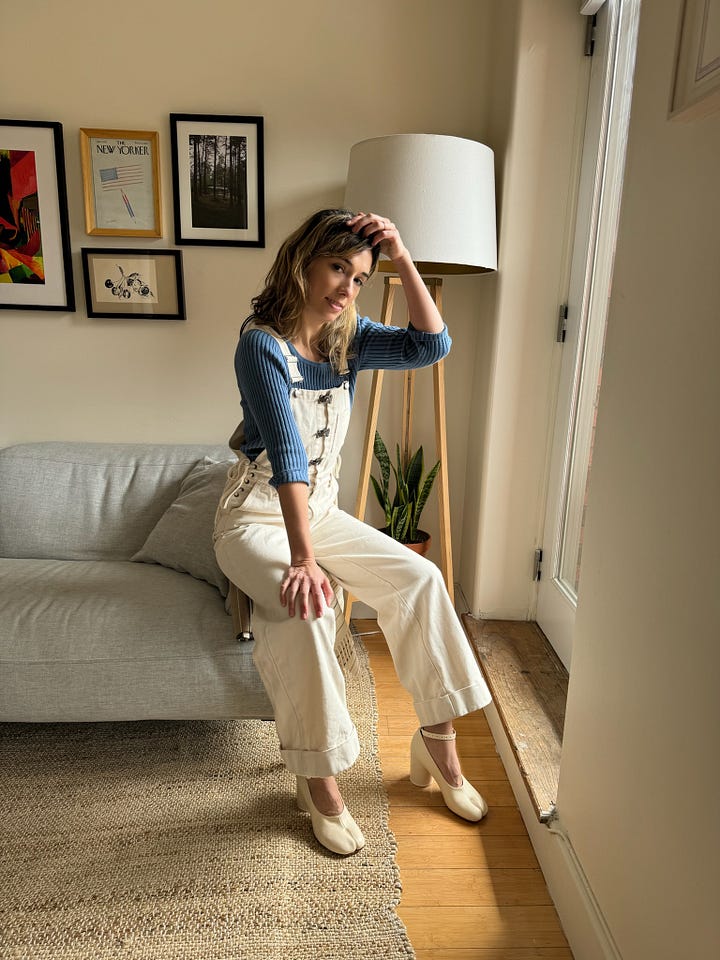
As with Sue’s archival examples, sometimes a rib stitch just creates a unique aesthetic, and isn’t meant to provide a fitted element. Many (usually) men’s sweaters throughout history have utilized ribbed stitches to form anything from semi-fitted to even oversized knits, all with that unique vertical ribbing visual effect.


If you are looking for a fitted ribbed knit top, as with any fitted on top, I recommend keeping the length cropped or meeting-at-your-bottoms-waistline—otherwise you run into having to deep tuck your top in which can look chunky and funky.
TOTEME delicate rib acetate blend (less breathable FYI) striped fully fashioned tank $410
Vintage mock neck sleeveless cut-and-sew nylon/spandex (estimate) top sz S $25
Vintage L.L. Bean made in Australia 100% cotton unfitted ribbed V-neck sweater sz L $24
Follow Sue on Instagram for more knitwear tokens, @makersofmanners & the Oak Hill, NY boutique where her studio is located above @mattice.boutique
No matter your fit journey, you’re going to encounter ribbed knits in almost all your cut-and-sew and fully fashioned knitwear, (cuffs, hems, necklines). Be sure to appreciate those stretchy little stitches for all they’re worth! And if you are going the all-over ribbed knit, fitted garment route, enjoy being automatically sexified.
My love to all the ribs from whence we came. <3 Hannah






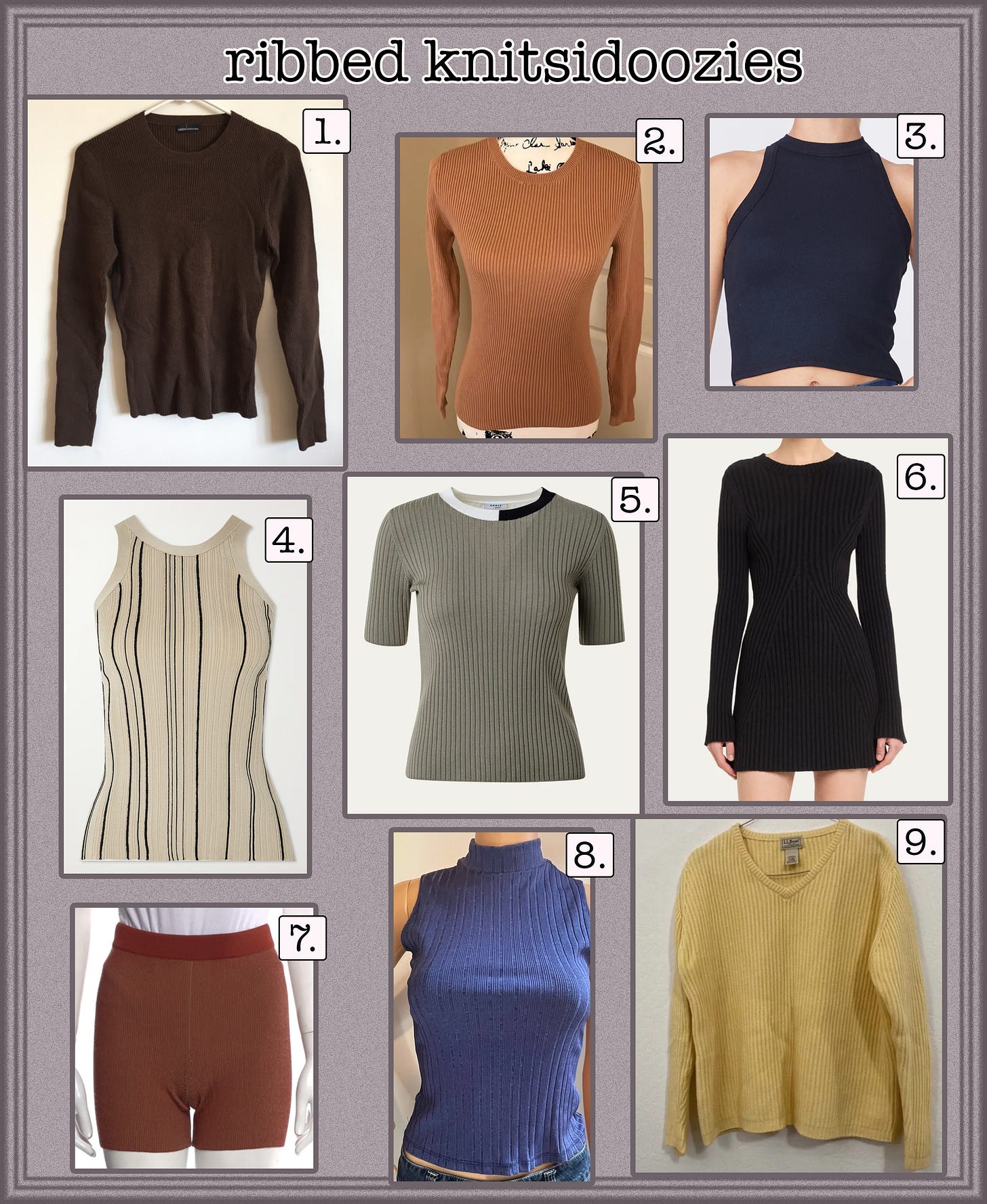
Way to make the most of your recovery time! Loved seeing the ribbed turtleneck-oh so 70’s to me.
As a hippy (not hippie) person I feel like ribbed knits tend to “widen” me. any tips?